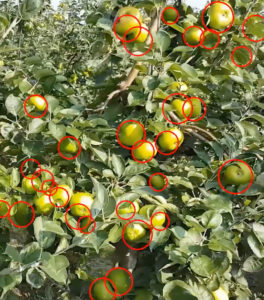Robotics developers have taken a variety of approaches to try to equal human dexterity. Cambridge Consultants today unveiled Hank, a robot with flexible robotic fingers inspired by the human hand. Hank uses a pioneering sensory system embedded in its pneumatic fingers, providing a sophisticated sense of touch and slip. It is intended to emulate the human ability to hold and grip delicate objects using just the right amount of pressure.
Cambridge Consultants stated that Hank could have valuable applications in agriculture and warehouse automation, where the ability to pick small, irregular, and delicate items has been a “grand challenge” for those industries.
Picking under pressure
While warehouse automation has taken great strides in the past decade, today’s robots cannot emulate human dexterity at the point of picking diverse individual items from larger containers, said Cambridge Consultants. E‑commerce giants are under pressure to deliver more quickly and at a cheaper price, but still require human operators for tasks that can be both difficult and tedious.
“The logistics industry relies heavily on human labor to perform warehouse picking and packing and has to deal with issues of staff retention and shortages,” said Bruce Ackman, logistics commercial lead at Cambridge Consultants. “Automation of this part of the logistics chain lags behind the large-scale automation seen elsewhere.”
By giving a robot additional human-like senses, it can feel and orient its grip around an object, applying just enough force, while being able to adjust or abandon if the object slips. Other robots with articulated arms used in warehouse automation tend to require complex grasping algorithms, costly sensing devices, and vision sensors to accurately position the end effector (fingers) and grasp an object.
 Keynotes | Speakers | Exhibitors | Register
Keynotes | Speakers | Exhibitors | Register
Hank uses sensors for a soft touch
Hank uses soft robotic fingers controlled by airflows that can flex the finger and apply force. The fingers are controlled individually in response to the touch sensors. This means that the end effector does not require millimeter-accurate positioning to grasp an object. Like human fingers, they close until they “feel” the object, said Cambridge Consultants.
With the ability to locate an object, adjust overall system position and then to grasp that object, Hank can apply increased force if a slip is detected and generate instant awareness of a mishandled pick if the object is dropped.
Cambridge Consultants claimed that Hank moves a step beyond legacy approaches to this challenge, which tend to rely on pinchers and suction appendages to grasp items, limiting the number and type of objects they can pick and pack.
“Hank’s world-leading sensory system is a game changer for the logistics industry, making actions such as robotic bin picking and end-to-end automated order fulfillment possible,” said Ackman. “Adding a sense of touch and slip, generated by a single, low-cost sensor, means that Hank’s fingers could bring new efficiencies to giant distribution centers.”
Molded from silicone, Hank’s fingers are hollow and its novel sensors are embedded during molding, with an air chamber running up the center. The finger surface is flexible, food-safe, and cleanable. As a low-cost consumable, the fingers can simply be replaced if they become damaged or worn.
With offices in Cambridge in the U.K.; Boston, Mass.; and Singapore, Cambridge Consultants develops breakthrough products, creates and licenses intellectual property, and provides business and technology consulting services for clients worldwide. It is part of Altran, a global leader in engineering and research and development services. For more than 35 years, Altran has provided design expertise in the automotive, aerospace, defense, industrial, and electronics sectors, among others.
 Mamut is an AI-powered autonomous robotic platform. Equipped with an array of sensors, Mamut maps and navigates its surroundings without the need for GPS or fixed radio infrastructure. As it travels the rows of a field, orchard or vineyard, cameras capture detailed crop data at the plant level, enabling accurate predictions of yield and crop health.
Mamut is an AI-powered autonomous robotic platform. Equipped with an array of sensors, Mamut maps and navigates its surroundings without the need for GPS or fixed radio infrastructure. As it travels the rows of a field, orchard or vineyard, cameras capture detailed crop data at the plant level, enabling accurate predictions of yield and crop health.